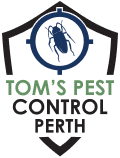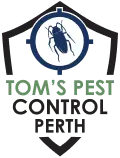Prompt, Affordable Same-Day Pest Control in Perth – From $129.
- Home
- Pest Treatments
- Termite Inspection & Treatment
- Ant Pest Control
- Bed Bug Treatment
- Beetle Pest Control
- Bird Control
- Borer Pest Control
- Cockroach Control
- Flea Control
- Fly Control
- Fox Trapping
- Mite Control
- Mosquito Pest Control
- Moth Control
- Possum Removal
- Silverfish Control
- Spider Control
- Wasp Control
- Rats And Mice Control
- End of Lease Pest Control
- Pest Management Perth
- General Pest Control
- Commercial Pest Control
- Office Pest Control
- Restaurants & Cafes Pest Control
- Hospitality Pest Control
- Education Facilities Pest Control
- Hospital & Aged Care Pest Control
- Pest Control Food Industry
- Factories & Warehouses Pest Control
- Government Buildings Pest Control
- Assets & Facilities Pest Management
- Farming and Agriculture Pest Control
- Strata Pest Control
- Construction Pest Control
- General Pest Control
- Termites
- Pest Info
- Pest Inspection
- Contact
- Home
- Pest Treatments
- Termite Inspection & Treatment
- Ant Pest Control
- Bed Bug Treatment
- Beetle Pest Control
- Bird Control
- Borer Pest Control
- Cockroach Control
- Flea Control
- Fly Control
- Fox Trapping
- Mite Control
- Mosquito Pest Control
- Moth Control
- Possum Removal
- Silverfish Control
- Spider Control
- Wasp Control
- Rats And Mice Control
- End of Lease Pest Control
- Pest Management Perth
- General Pest Control
- Commercial Pest Control
- Office Pest Control
- Restaurants & Cafes Pest Control
- Hospitality Pest Control
- Education Facilities Pest Control
- Hospital & Aged Care Pest Control
- Pest Control Food Industry
- Factories & Warehouses Pest Control
- Government Buildings Pest Control
- Assets & Facilities Pest Management
- Farming and Agriculture Pest Control
- Strata Pest Control
- Construction Pest Control
- General Pest Control
- Termites
- Pest Info
- Pest Inspection
- Contact
Carpenter Ants
(08) 6202 7096
Get A Free Quote Now!
Get A Free Quote Now!
Carpenter Ants
The behaviour of excavating wood to construct their nests is why this species is called “carpenter ants.” Despite their name, carpenter ants do not actually consume the wood; instead, they create polished tunnels by chewing through it. These tunnels serve as their nests and provide shelter for their colonies.
Carpenter ants are a widespread species found throughout Australia. They can be encountered in various environments, including homes, gardens, forests, and other wooded areas. These ants are attracted to moist and decaying wood, making structures with water damage or untreated wooden components particularly vulnerable to infestations.
Infestations of carpenter ants can lead to structural damage over time if left untreated, as their tunneling weakens the integrity of wooden materials. It is crucial to address carpenter ant infestations promptly to prevent further damage and ensure the safety of the affected structures. Seeking professional assistance from ant control experts can help in identifying and effectively eliminating carpenter ant colonies, protecting your property from potential harm.
Carpenter ants vary in size and colour, with their length ranging from 1/2 inch to 5/8 inch and their colours ranging from black to dark brown or brownish orange. They have six legs and two antennae, and their segmented oval body makes it easy to identify them. Carpenter ants are a polymorphic species, indicating that the worker ants in their colony are of multiple sizes.
Carpenter ants construct their nests in wood sources such as tree stumps, decaying fence posts, aged firewood, and beneath stones. The primary colony is usually located outside and houses the queen, eggs, and juveniles. Meanwhile, the workers, mature larvae, and pupae reside in satellite nests that extend from the primary colony. After several years of development, satellite nests can be established indoors or outdoors.
After a brief flight, winged males and females of the carpenter ant species mate, and then the males die while the females shed their wings and search for a suitable site to establish their nest.
The queen carpenter ant prefers to nest in soft, moist wood such as hollow trees, logs, or stumps. Within her chosen nest, the queen lays approximately 20 eggs which will develop into adult worker ants in about two months.
The initial workers of the colony are small in size as they rely on the food reserves provided by the queen. Subsequent broods grow larger as the foraging workers adequately nourish them.
Once the carpenter ants reach maturity, they take on multiple roles, including searching for food, increasing the size of the nest, and providing care for the queen and the growing larvae. The carpenter ants sustain themselves by consuming deceased insects, small invertebrates, and honeydew produced by aphids and scale insects.
Eating Habits
The diet of carpenter ants includes plants, insects, honeydew, meats, sweets, and grease. These ants have been observed to travel up to 300 feet from their nest for food. They are active during daylight hours, from early morning to evening.
Signs of Carpenter Ant Infestation
Large wingless black ants on your property can be a significant sign of a carpenter ant infestation. However, spotting these ants indoors does not necessarily mean the nest is inside your home. The nest could be situated outside, and the worker ants may enter your home for food and water. These workers usually feed on sugary and fatty foods as well as meats.
Carpenter Ant Extermination Expert
Tom’s Pest Control is a company that specialises in removing carpenter ant infestations with its highly knowledgeable and experienced exterminators. The team’s responsibilities include:
- Identifying the specific ant species
- Locating their entry points
- Creating a comprehensive plan for long-term prevention and control
Our pest extermination services are customised to fit the unique needs of each property owner to ensure successful results.
We acknowledge the significance of maintaining a safe and pest-free environment; thus, we strive to offer safe solutions tailored to your property’s specific requirements. Our proficient professionals can cater to your needs, whether you require a one-time ant removal service or regular assistance for controlling various pests.
Call Us Today
Tom’s Pest Control is the ideal solution for any pest control requirements. Our team of skilled pest exterminators are fully licensed, bonded, and insured, ensuring their reliability and trustworthiness.
We offer affordable pest control solutions and a complimentary estimate, assuring you that we will complete the task accurately on the initial attempt. Our services include eliminating insects and offering tips to prevent future infestation so you can rely on Tom’s Pest Control.
Contact us to receive a complimentary estimate and let us handle your pest control issues without delay.
Frequently Asked Questions
How Do You Prevent Carpenter Ants?
To prevent carpenter ants from entering your home, it is essential to eliminate standing water or sources of moisture. Additionally, sealing all openings and cracks near doors and windows can limit their access. Finally, since these ants thrive in damp wood, storing building materials and firewood away from your property is advisable.
Do Carpenter Ants Bite?
Carpenter ants are capable of delivering painful bites due to their strong jaws. In addition, these bites may cause a burning sensation since carpenter ants inject formic acid while biting. Nevertheless, despite the pain, carpenter ant bites are not considered harmful.
How to Get Rid of Carpenter Ants?
To address a potential ant infestation on your property, it is recommended to seek assistance from a licensed pest control specialist such as Tom’s Pest Control. Our team of experts can evaluate the situation and propose the most appropriate course of action for effectively eliminating carpenter ants.
 (08) 6202 7096
(08) 6202 7096


